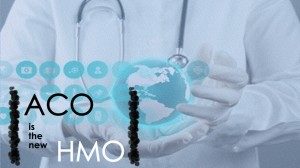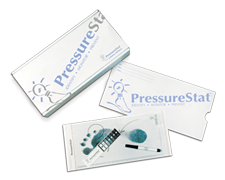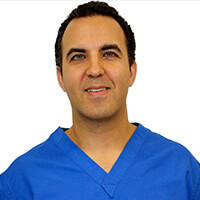Podcast: Play in new window | Download
 Part of Obamacare is the development of ACOs (accountable car organizations).
Part of Obamacare is the development of ACOs (accountable car organizations).
These organizations were designed to help in health care reform. Forming these accountable care organizations are the first step in saving money for healthcare in our country. Just like the HMOs back in the 90s made patients go through their primary care physician first before being referred to a specialist to help save money, ACO will be very similar. During the late 1990s our economy was growing and employers has decreasing health insurance costs. However, there was a downside to HMOs. More difficult situations occurred for patients who needed to see a specialist and the PCPs were in capitated HMO plans and were talking advantage by holding onto their money and not applying it toward the patient care. Capitation is when doctors (PCPs) are given an financial incentive to consider the cost of treatment to a patient. I still see this happening in my area.
An ACO will be a type of hospital or large integrated group of doctors and medical staff that will provide a transparent view on the cost and process of healthcare. It will allow patients to “window shop” for medical services by cost and quality. St. Clare Medical center in Fenton, MO became one of 400 ACOs recently. I like this idea about getting all doctors and medical facilities on one level playing field but I don’t think it will work and other professionals have agreed.
Accountable care organizations are like the “Ford” or “GM” of the auto industry. When you go to a dealership to buy a vehicle, you can just read the sticker of the car and know how much the whole car cost to buy. Well, without the dealership, you would have calculate the price of the engine, tires, electrical units, the body, etc separately and that would be much more expensive. The ACOs will save health care money or so they hope so.
In our sports and tech rants in our What the Foot podcast we will also start out by talking about Alex Rodriguez and his suspension for 2014. Also a new invention called the Sensoria socks that I will explain who it will find its way from runners to diabetics to prevent foot ulcers.
Are ACO (Accountable Care Organizations) the next HMO? Good-Bye Arod! What cool invention from #CES2014 are going to help runners and diabetics? Are specialist going to survive the new healthcare reform and will hospitals accept all different specialist into their ACOs.Read and even listen to our Foot podcast and how easy it is to test for neuropathy in the foot.
What’s the difference between a large and small sensory nerve in the foot that can cause numbness problems? How do you test for sensory neuropathy? This article and radio show are about testing for numbness in the foot. We also have more information on vitamin treatments for neuropathy in our website on foot and ankle problems.
Sensory examination
 The most important exam for testing for neuropathy in the foot is the neurological physical examination in the office. This exam consists of deep tendon reflex, proprioceptive exam, sharp and dull touch, warm and cold temperature testing and vibratory sensation. All these simple tests can tell us important information that doesn’t require expensive tests, MRIs, or biopsies. There are mainly 2 different types of sensory nerves in the foot, large fiber and small fiber (2 sub-types). The small are composed of two sub-types, the C fiber that is thin (diameter 0.4-1 micrometer) and unmyelinated (no insulator or myelin). The second type is the more rapid, thinly myelinated A-delta fiber (1-5 micrometer in diameter). Both carry types of pain sensation and other sensations (intense pressure, cold, and others depending on the receptor type). The large fibers carry touch and pressure as well as joint position sense. These fibers are myelinated, hence faster in conducting impulses from the periphery to the brain.
The most important exam for testing for neuropathy in the foot is the neurological physical examination in the office. This exam consists of deep tendon reflex, proprioceptive exam, sharp and dull touch, warm and cold temperature testing and vibratory sensation. All these simple tests can tell us important information that doesn’t require expensive tests, MRIs, or biopsies. There are mainly 2 different types of sensory nerves in the foot, large fiber and small fiber (2 sub-types). The small are composed of two sub-types, the C fiber that is thin (diameter 0.4-1 micrometer) and unmyelinated (no insulator or myelin). The second type is the more rapid, thinly myelinated A-delta fiber (1-5 micrometer in diameter). Both carry types of pain sensation and other sensations (intense pressure, cold, and others depending on the receptor type). The large fibers carry touch and pressure as well as joint position sense. These fibers are myelinated, hence faster in conducting impulses from the periphery to the brain.
When you touch a hot plate for example, you will feel pain/hot right away, that is the A-delta fibers, and then later (seconds or minute later) you feel deep achy burning pain, that is the slow C fiber.
EMG/NCS (nerve conduction studies) measures only the faster (large nerves) and does not exclude the possibility of small fiber neuropathy if it is normal. Therefore, to test the small nerves you will need a ENFD as shown below. One of my favorite lecturers in podiatry is Dr. Allen Jacobs. You can listen to his excellent perspective on how to test for neuropathy.
Are ACOs (Accountable Care Organizations) the new HMO?

Dr. Dennis M. Timko
Podiatrist
Dr. Dennis Timko, is a podiatrist in the St. Louis, Eureka, MO. area. Dr. Timko specializes in diabetic foot care, foot surgery, AFOs, and orthotics. Dr. Timko is the solo owner of Arch City Foot & Ankle, which has been in business since 2003.
